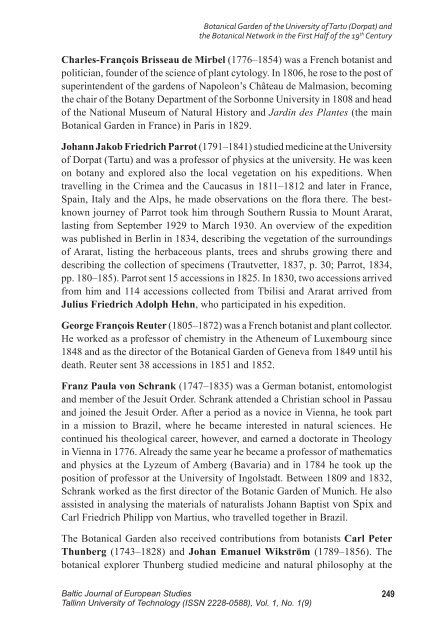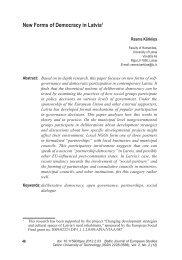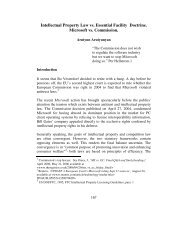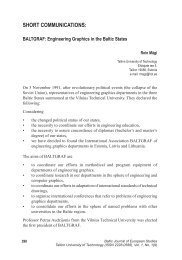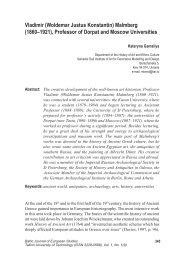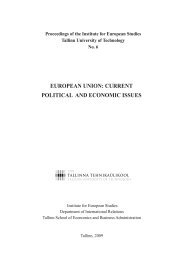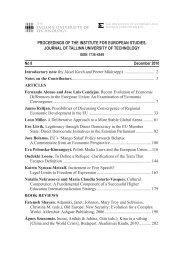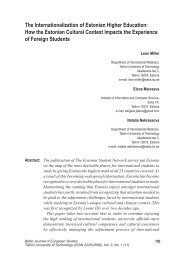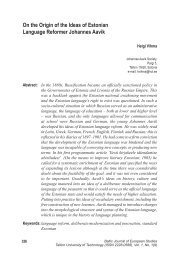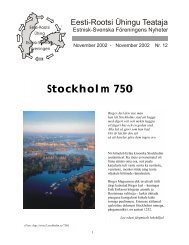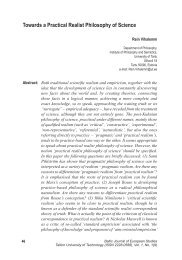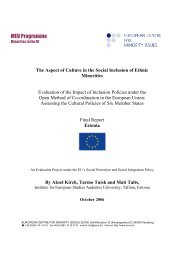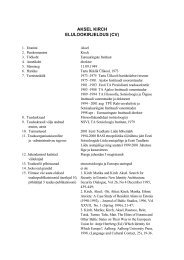Botanical Garden of the university of tartu (dorpat) - The Institute for ...
Botanical Garden of the university of tartu (dorpat) - The Institute for ...
Botanical Garden of the university of tartu (dorpat) - The Institute for ...
You also want an ePaper? Increase the reach of your titles
YUMPU automatically turns print PDFs into web optimized ePapers that Google loves.
<strong>Botanical</strong> <strong>Garden</strong> <strong>of</strong> <strong>the</strong> University <strong>of</strong> Tartu (Dorpat) and<br />
<strong>the</strong> <strong>Botanical</strong> Network in <strong>the</strong> First Half <strong>of</strong> <strong>the</strong> 19 th Century<br />
Charles-François Brisseau de Mirbel (1776–1854) was a French botanist and<br />
politician, founder <strong>of</strong> <strong>the</strong> science <strong>of</strong> plant cytology. In 1806, he rose to <strong>the</strong> post <strong>of</strong><br />
superintendent <strong>of</strong> <strong>the</strong> gardens <strong>of</strong> Napoleon’s Château de Malmasion, becoming<br />
<strong>the</strong> chair <strong>of</strong> <strong>the</strong> Botany Department <strong>of</strong> <strong>the</strong> Sorbonne University in 1808 and head<br />
<strong>of</strong> <strong>the</strong> National Museum <strong>of</strong> Natural History and Jardin des Plantes (<strong>the</strong> main<br />
<strong>Botanical</strong> <strong>Garden</strong> in France) in Paris in 1829.<br />
Johann Jakob Friedrich Parrot (1791–1841) studied medicine at <strong>the</strong> University<br />
<strong>of</strong> Dorpat (Tartu) and was a pr<strong>of</strong>essor <strong>of</strong> physics at <strong>the</strong> <strong>university</strong>. He was keen<br />
on botany and explored also <strong>the</strong> local vegetation on his expeditions. When<br />
travelling in <strong>the</strong> Crimea and <strong>the</strong> Caucasus in 1811–1812 and later in France,<br />
Spain, Italy and <strong>the</strong> Alps, he made observations on <strong>the</strong> flora <strong>the</strong>re. <strong>The</strong> bestknown<br />
journey <strong>of</strong> Parrot took him through Sou<strong>the</strong>rn Russia to Mount Ararat,<br />
lasting from September 1929 to March 1930. An overview <strong>of</strong> <strong>the</strong> expedition<br />
was published in Berlin in 1834, describing <strong>the</strong> vegetation <strong>of</strong> <strong>the</strong> surroundings<br />
<strong>of</strong> Ararat, listing <strong>the</strong> herbaceous plants, trees and shrubs growing <strong>the</strong>re and<br />
describing <strong>the</strong> collection <strong>of</strong> specimens (Trautvetter, 1837, p. 30; Parrot, 1834,<br />
pp. 180–185). Parrot sent 15 accessions in 1825. In 1830, two accessions arrived<br />
from him and 114 accessions collected from Tbilisi and Ararat arrived from<br />
Julius Friedrich Adolph Hehn, who participated in his expedition.<br />
George François Reuter (1805–1872) was a French botanist and plant collector.<br />
He worked as a pr<strong>of</strong>essor <strong>of</strong> chemistry in <strong>the</strong> A<strong>the</strong>neum <strong>of</strong> Luxembourg since<br />
1848 and as <strong>the</strong> director <strong>of</strong> <strong>the</strong> <strong>Botanical</strong> <strong>Garden</strong> <strong>of</strong> Geneva from 1849 until his<br />
death. Reuter sent 38 accessions in 1851 and 1852.<br />
Franz Paula von Schrank (1747–1835) was a German botanist, entomologist<br />
and member <strong>of</strong> <strong>the</strong> Jesuit Order. Schrank attended a Christian school in Passau<br />
and joined <strong>the</strong> Jesuit Order. After a period as a novice in Vienna, he took part<br />
in a mission to Brazil, where he became interested in natural sciences. He<br />
continued his <strong>the</strong>ological career, however, and earned a doctorate in <strong>The</strong>ology<br />
in Vienna in 1776. Already <strong>the</strong> same year he became a pr<strong>of</strong>essor <strong>of</strong> ma<strong>the</strong>matics<br />
and physics at <strong>the</strong> Lyzeum <strong>of</strong> Amberg (Bavaria) and in 1784 he took up <strong>the</strong><br />
position <strong>of</strong> pr<strong>of</strong>essor at <strong>the</strong> University <strong>of</strong> Ingolstadt. Between 1809 and 1832,<br />
Schrank worked as <strong>the</strong> first director <strong>of</strong> <strong>the</strong> Botanic <strong>Garden</strong> <strong>of</strong> Munich. He also<br />
assisted in analysing <strong>the</strong> materials <strong>of</strong> naturalists Johann Baptist von Spix and<br />
Carl Friedrich Philipp von Martius, who travelled toge<strong>the</strong>r in Brazil.<br />
<strong>The</strong> <strong>Botanical</strong> <strong>Garden</strong> also received contributions from botanists Carl Peter<br />
Thunberg (1743–1828) and Johan Emanuel Wikström (1789–1856). <strong>The</strong><br />
botanical explorer Thunberg studied medicine and natural philosophy at <strong>the</strong><br />
Baltic Journal <strong>of</strong> European Studies<br />
Tallinn University <strong>of</strong> Technology (ISSN 2228-0588), Vol. 1, No. 1(9)<br />
249


